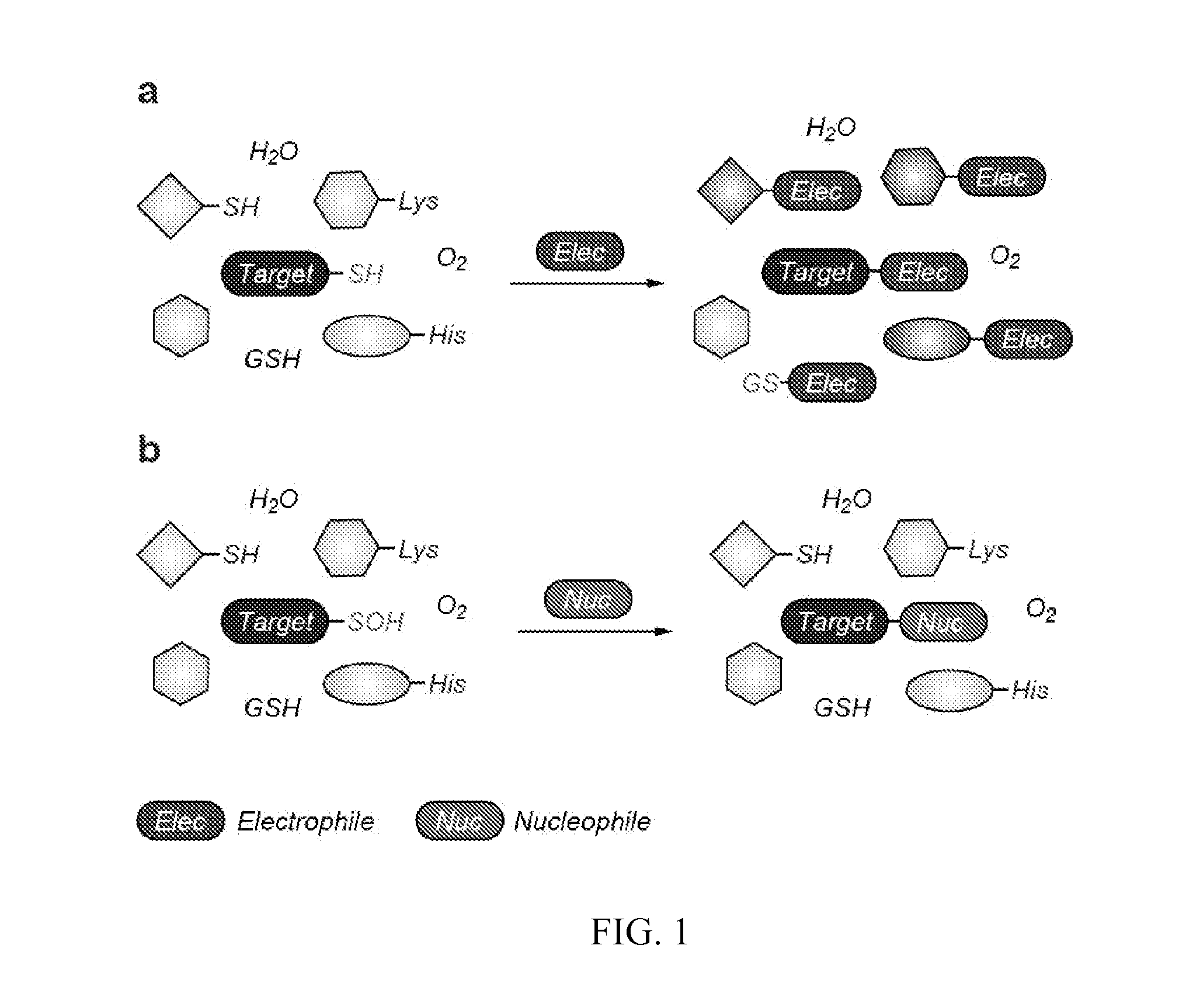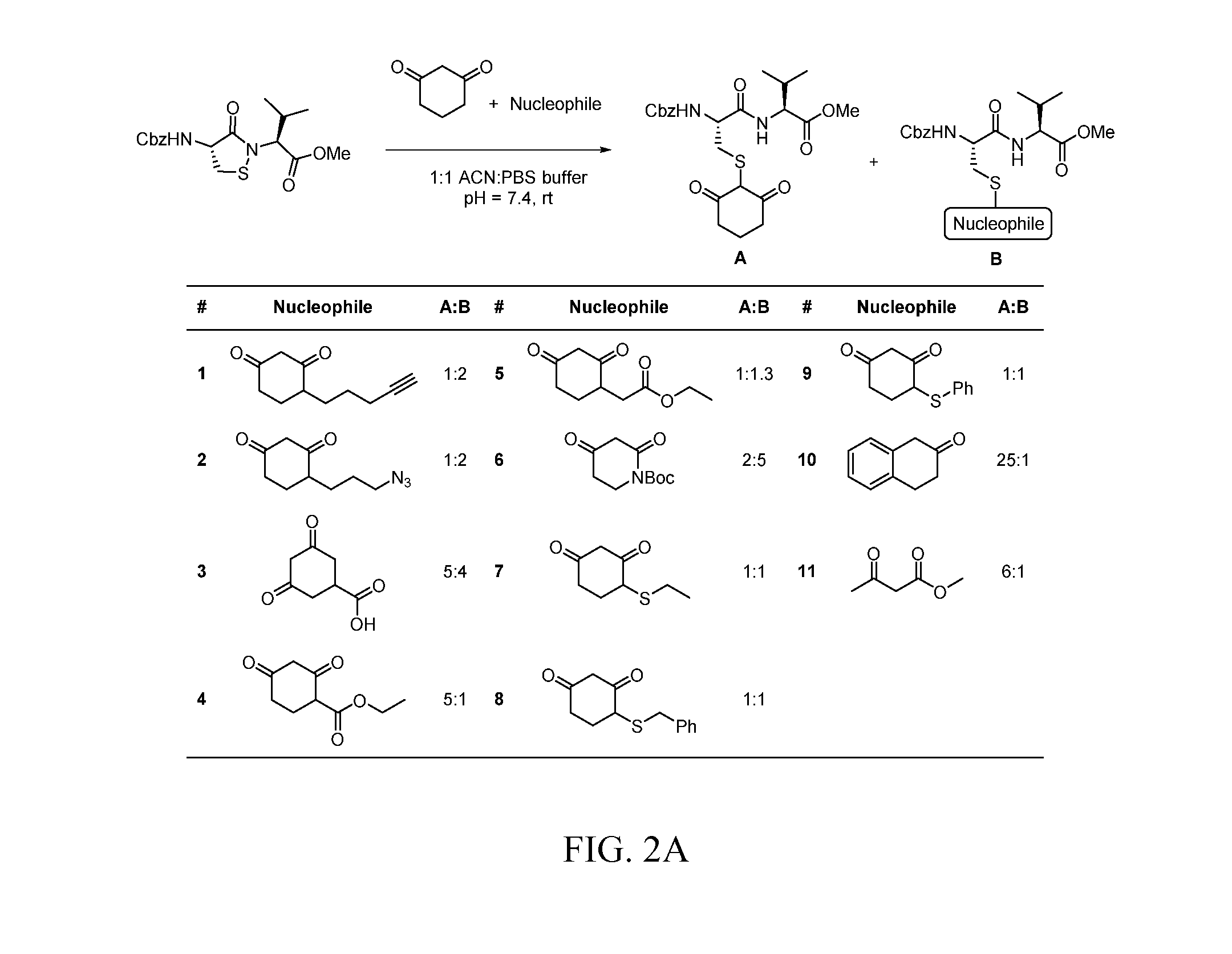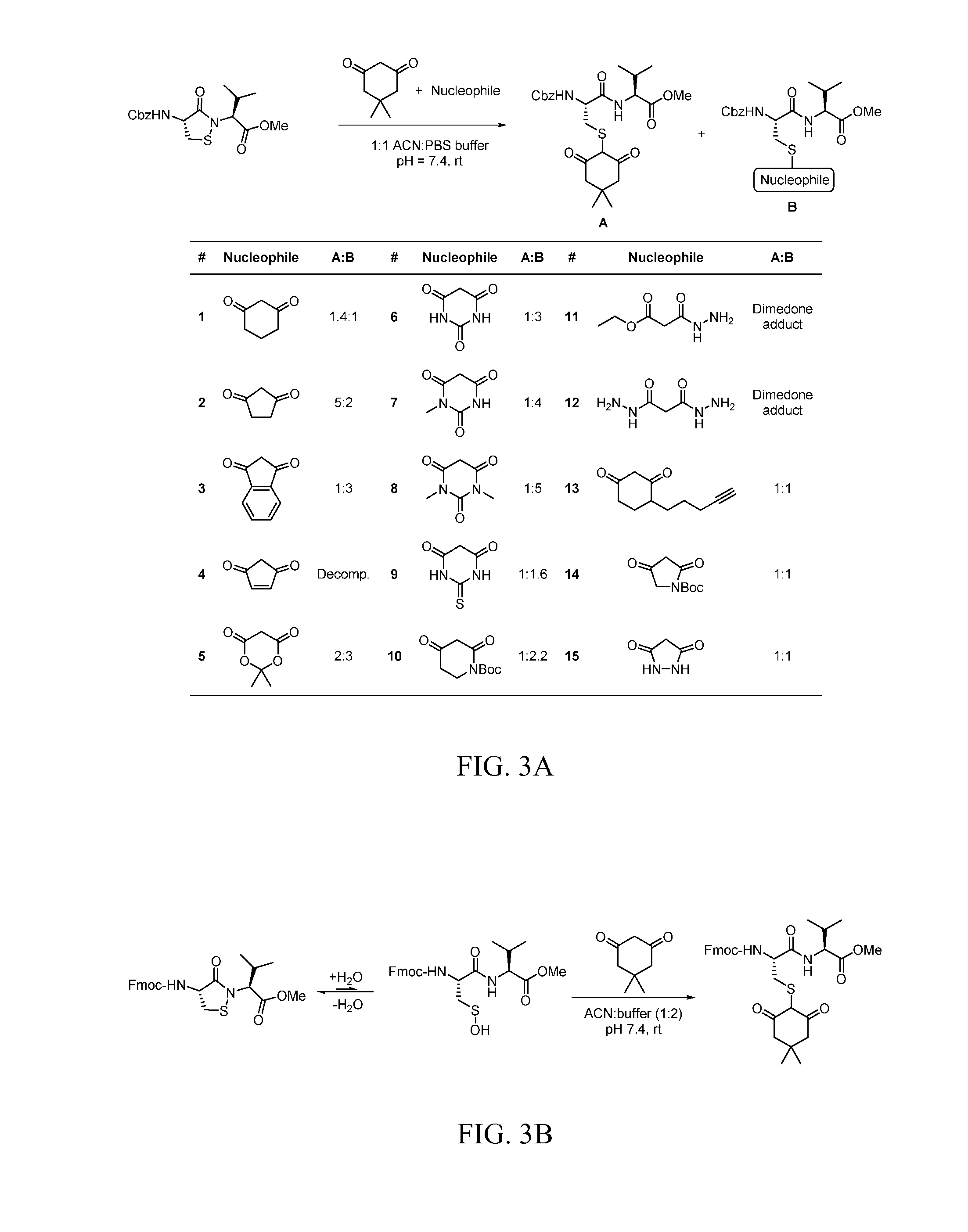Targeted Covalent Probes and Inhibitors of Proteins Containing Redox-Sensitive Cysteines
a technology of redox-sensitive cysteines and covalent probes, which is applied in the field of targeted covalent probes and inhibitors of proteins containing redox-sensitive cysteines, can solve the problems of traditional approaches to irreversible inhibition, poor selectivity across the family of enzymes, and and achieve poor specificity and selectivity. , the effect of high intracellular substrate concentrations
- Summary
- Abstract
- Description
- Claims
- Application Information
AI Technical Summary
Benefits of technology
Problems solved by technology
Method used
Image
Examples
example 1
Synthesis of Probe Compound, DYn-0, and Inhibition Studies
[0148]The DYn-0 compound (FIG. 6A) may be synthesized by the following method. To a dry round bottom flask with nitrogen was added 3-methoxy-5-oxocyclohex-3-9-enecarboxylic acid (300 mg, 1.76 mmol), EDC-HCl (505.9 mg, 2.65 mmol), and dry DMF (2 mL). The reaction was allowed to mix at room temperature for 30 min under nitrogen. 4-pentyneamine (293.1 mg, 3.53 mmol) was added and the reaction mixture was brought up to 75° C. and allowed to mix overnight under nitrogen. The reaction was quenched with addition of water and extracted with EtOAc. The organic layer was dried over MgSO4, filtered, and concentrated. The crude material was not subjected to flash column chromatography resulting in a yield of 329.2 mg of DYn-0 product (79% yield).
[0149]The inhibition of PTP1B was studied using the probe DYn-0 and BP-Yn1. Insulin binding to Insulin Receptor-β (IRβ) induces receptor autophosphorylation on specific tyrosine residues within t...
example 2
Synthesis of Probe Compound, DYn-1
[0153]The DYn-1 compound (FIG. 5) may be synthesized by the following method. To a solution of 3-ethoxy-6-(prop-2-yn-1-yl)cyclohex-2-enone (0.05 g, 0.29 mmol) in acetonitrile (2 ml) and water (2 ml) was added CAN (0.015 g, 0.028 mmol). The solution was heated to reflux for 2 hr. The reaction mixture was then diluted with brine (20 ml), and extracted with EtOAc (3×20 ml). The organic phases were combined, washed with brine (30 ml), dried over Na2SO4, and concentrated in vacuo. The resulting orange solid was purified by silica gel column chromatography using 1:1 Hexanes:EtOAc to give compound 1 as a pale yellow solid (0.042 g, 0.28 mmol) in 96% yield. Rf: 0.3 (1:1 Hexanes:EtOAc).
example 3
Synthesis of Probe Compound, DYn-2
[0154]The DYn-2 compound of Formula XII (FIG. 5):
[0155]FIG. 5 may be synthesized by the following method from Jackson, P. M.; Moody, C. J.; and Shah, P. Journal of the Chemical Society, Perkin Transactions 1: Organic and Rio-Organic Chemistry (1972-1999), (11), 2909-18, 1990 (FIG. 6B, Scheme 4). All reactions were conducted in flame-dried glassware under an argon atmosphere with dry solvents, unless otherwise noted. Tetrahydrofuran (THF) was freshly distilled from sodium / benzophenone. All chemicals were purchased from Sigma-Aldrich (St. Louis, Mo.) and used as received. Silica gel P60 (Sorbent Technologies) was used for column chromatography. Reactions were monitored by thin layer chromatography (TLC) carried out using Analtech 60 F254 silica gel (precoated sheets, 0.25 mm thick). 5-iodopent-1-yne was synthesized according to the reported procedure. 1H NMR and 13C NMR spectra were collected in CDCl3 (Cambridge Isotope Laboratories, Cambridge, Mass.)...
PUM
| Property | Measurement | Unit |
|---|---|---|
| concentrations | aaaaa | aaaaa |
| time | aaaaa | aaaaa |
| dissociation constants | aaaaa | aaaaa |
Abstract
Description
Claims
Application Information
 Login to View More
Login to View More - R&D
- Intellectual Property
- Life Sciences
- Materials
- Tech Scout
- Unparalleled Data Quality
- Higher Quality Content
- 60% Fewer Hallucinations
Browse by: Latest US Patents, China's latest patents, Technical Efficacy Thesaurus, Application Domain, Technology Topic, Popular Technical Reports.
© 2025 PatSnap. All rights reserved.Legal|Privacy policy|Modern Slavery Act Transparency Statement|Sitemap|About US| Contact US: help@patsnap.com



